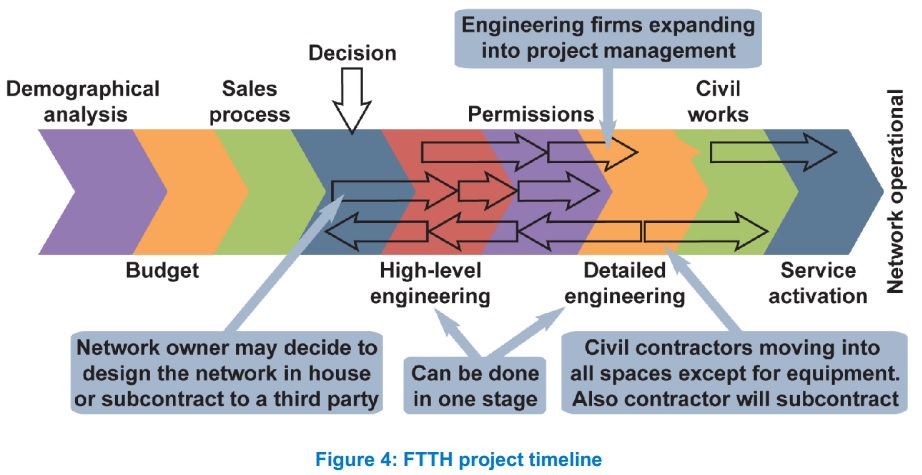The complexity of starting up an FTTH project does not often get highlighted as much as it should. A small but dedicated team will be needed to establish the viability of the project. Distinction should be established between planning, designing, building and operating an FTTH network. Different skills are required and therefore it is likely that people will need to be employed who have construction competences and others who can deal with the operation stage of the network
The following diagram provides a visual timeline of the key stages leading up to the activation of the FTTH network and highlights the most important events during the planning and deployment phase.
1. Strategic Planning: making important decisions from a business perspective: What to invest? Where and when to deploy? How to design the network? What process to follow? What to outsource? How to fund the network? Answering these questions involves:
a. Demographic analysis
b. Cost estimations/Budget control
c. Coverage analysis
d. Demand Aggregation/Sales Process
2. Network Design: creating a to-build plan for the selected areas. This can include various steps, such as:
a. Initial High-Level Design
b. Field Verification/Permissions
c. Detailed Design/Engineering
3. Network Construction: the actual construction of the network, including
a. Civil works (including trenching, duct installation, access chamber construction)
b. Fibre Outside Plant (OSP) installation (including laying, pulling, blowing or hanging of cables, splicing of fibres, installation of splice closures). On completion of this step, the network is referred to as a “Homes Passed” network
c. Subscriber connection (including installing the last drop segment into the building so that the subscriber is connected). Once this step is completed, the subscriber is referred to as a “Home Connected”.
4. Network Operations, including
a. Network activation (including installation of active equipment at subscriber side, and the powering of active equipment at Central Office side). The subscriber is now referred to as a “Home Activated”.
b. Service activation: selling and activating the fibre services
c. Network Repair and Maintenance
SOURCE FROM FTTH EUROPE
